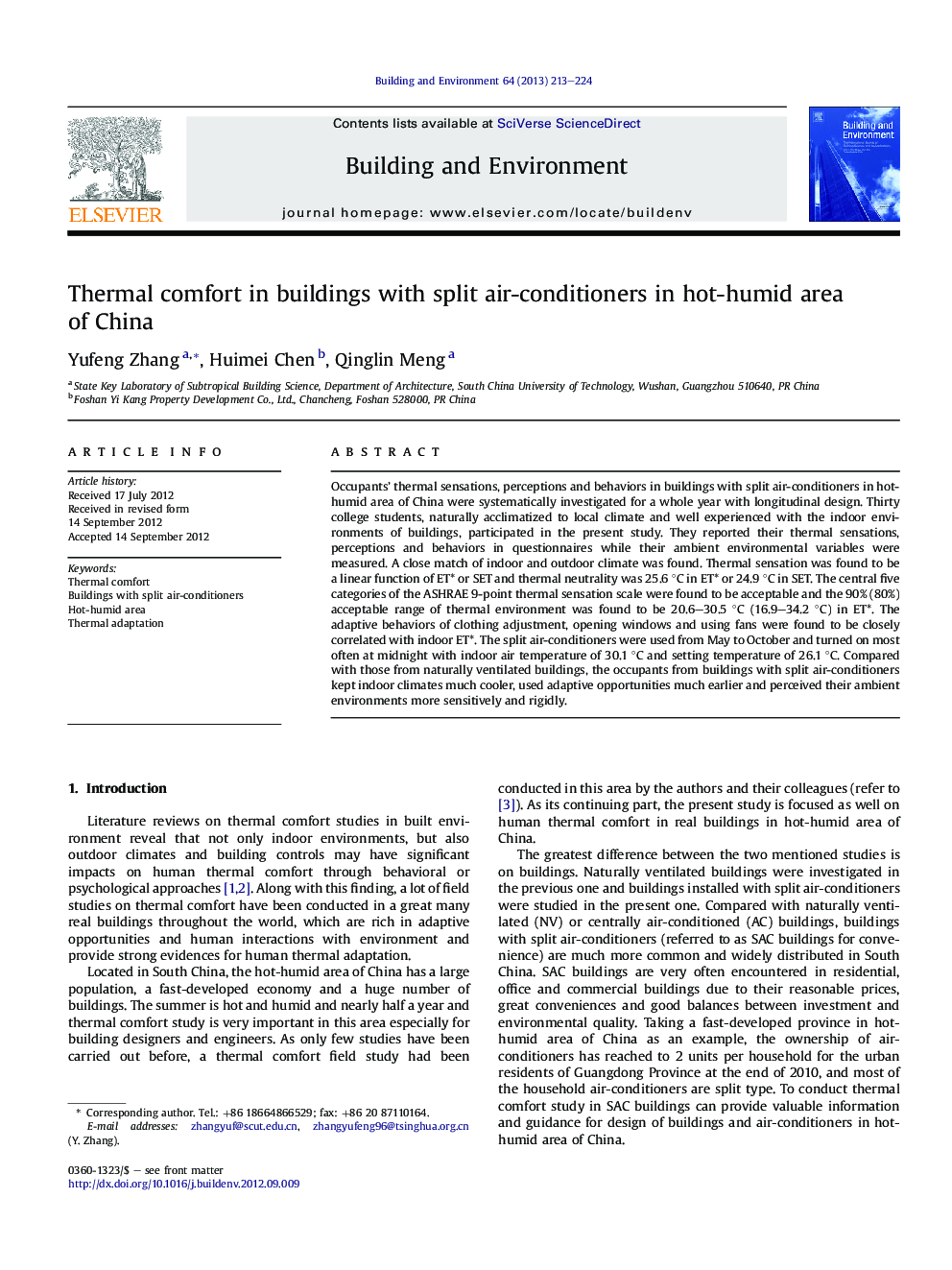| Article ID | Journal | Published Year | Pages | File Type |
|---|---|---|---|---|
| 248385 | Building and Environment | 2013 | 12 Pages |
Occupants' thermal sensations, perceptions and behaviors in buildings with split air-conditioners in hot-humid area of China were systematically investigated for a whole year with longitudinal design. Thirty college students, naturally acclimatized to local climate and well experienced with the indoor environments of buildings, participated in the present study. They reported their thermal sensations, perceptions and behaviors in questionnaires while their ambient environmental variables were measured. A close match of indoor and outdoor climate was found. Thermal sensation was found to be a linear function of ET* or SET and thermal neutrality was 25.6 °C in ET* or 24.9 °C in SET. The central five categories of the ASHRAE 9-point thermal sensation scale were found to be acceptable and the 90% (80%) acceptable range of thermal environment was found to be 20.6–30.5 °C (16.9–34.2 °C) in ET*. The adaptive behaviors of clothing adjustment, opening windows and using fans were found to be closely correlated with indoor ET*. The split air-conditioners were used from May to October and turned on most often at midnight with indoor air temperature of 30.1 °C and setting temperature of 26.1 °C. Compared with those from naturally ventilated buildings, the occupants from buildings with split air-conditioners kept indoor climates much cooler, used adaptive opportunities much earlier and perceived their ambient environments more sensitively and rigidly.
► Field study was conducted in buildings with split air-conditioners for a whole year. ► Thermal neutrality was 25.6 °C in ET* or 24.9 °C in SET. ► The 80% acceptable range of thermal environment was 16.9–34.2 °C in ET*. ► The central five categories of thermal sensation scale were found to be acceptable. ► Relationships between various behaviors and thermal environments were obtained.
